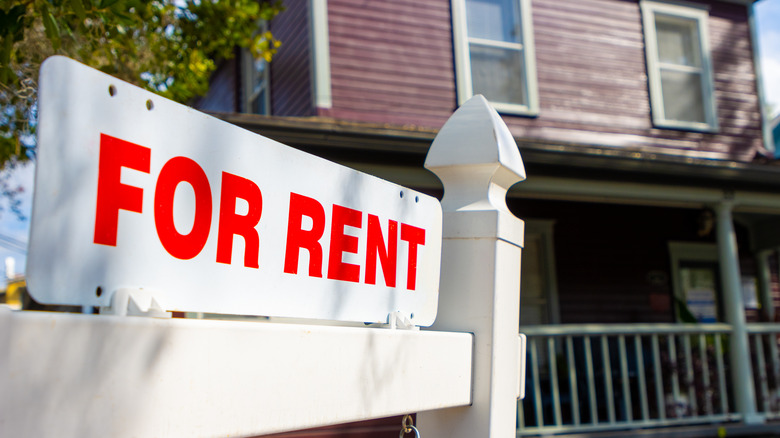Don't Spend More Than This Much Of Your Income On Rent
Whether you've moved into your first apartment or are concerned about the cost of your rent, you've probably come across the 30% rule in your research. This oft-quoted budgeting method suggests that 30% of your income (before taxes) should go toward your monthly rent, leaving the other 70% for bills, savings, and other such expenses. In other words, 30% of your monthly income is the maximum you should be spending on rent. But is it really that simple?
This rule originates from the 1969 Brooke Amendment, which (in simple terms) states that public housing cannot require tenants to spend more than 25% of their income on rent. In 1981, the percentage was boosted to 30%, and the rule stuck. While this rule is helpful, times are changing. The cost of living has been rising, especially in the US, and it's become increasingly common for people to spend more than 30% on rent. So while 30% might be a valid goal, in many areas of the country, it's just not realistic.
Whether you use the 30% rule or not, a rent calculator can help you figure out the specifics, depending on your income and expenses.
Why the 30% rule works... sometimes
If you're just starting out in the adult world and have no idea how to manage your finances, the 30% rule is a great place to start. This tried and true method can help you determine where you should move, if you should have roommates, and how to divvy up the rest of your expenses. For example, if you make $25,000 per year, that leaves you with a max of $625 each month to spend on rent. This narrows down potential apartments immensely; on a budget like that, you might want to live with roommates, in an area with a lower cost of living.
Not to mention that paying more than 30% on rent can put a serious strain on your finances. You don't want to have no money left over for bills, groceries, and a reasonable quality of life. This time-tested budgeting method can be very helpful if you're planning to move or have some flexibility when it comes to picking a community. Of course, that flexibility just doesn't exist for all (most?) of us. If you're already locked into a location for any reason, the 30% method might not provide much guidance.
What should you do if you're already spending more on rent?
While the 30% rule generally works, it's definitely not for everyone. If you're living in a city with a high cost of living like NYC, chances are that more than 30% of your income goes to rent. Professional financial planner Michaela McDonald told CNBC: "[Spending more than 30% on rent] is ok. You just have to adjust other areas of your budget."
Major cities do tend to be pricier, but they're also rife with job possibilities and solid public transporation. If you earn more money, you'll have less to worry about when it comes to rent, and be able to cut corners. You can also save money by opting for the bus (or subway, if they're available in your city). The cost of a monthly bus pass varies per city, but it's a lot cheaper than the money you'll spend on car insurance, gas, maintenance, and parking. According to the American Public Transportation Association, the average household could save at least $13,000 by using public transit.
You can also avail yourself of the many cultural amenities afforded by life in the big city. Free concerts, restaurant weeks, and public parks are all great ways to get more mileage out of your location and justify the higher rent. At the end of the day, if you're making a few adjustments in other areas of your life, it's okay to spend 50% (or more) of your gross income on rent.


